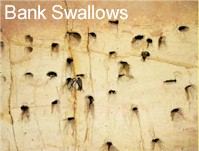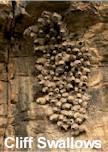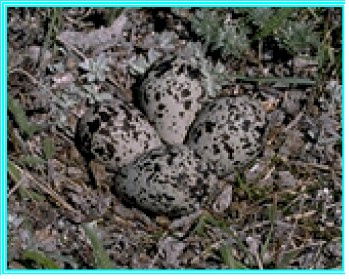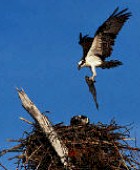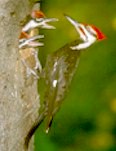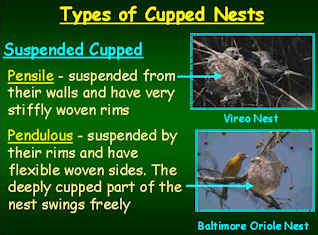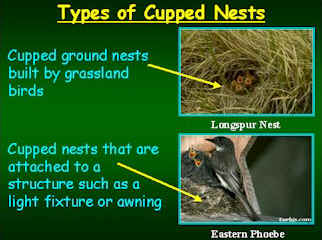Nesting Ecology
A nest is a structure made by birds to hold eggs and to provide shelter. There is great diversity in the types of nests that birds build and where they are placed, each suited to particular habitat or reproductive requirements. Nests are made of various kinds of organic materials including twigs, grass, lichens, and leaves among others. Inorganic materials are also used including mud, rocks, tinfoil, ribbons, spider webs, etc. Some birds use nests for attracting mates, for example, if a prospective mate rejects the nest of a male Village Weaver he will tear it down and build a new one. Male Marsh Wrens may build 20 or more nests for comparison by prospective mates. Nest types range from a simple gathering of materials such as the gathering of bare branches that the White Tern places its eggs to enormous communal apartments of Social Weavers.
With all this variety it may seem like a daunting task to learn how to identify nests and know which kind of bird built it. However, there are a few types of nests that are very common, with each species modifying the common design slightly to suit individual needs. Another point to keep in mind is that most nest sizes are proportional to the size of the bird. One eagle nest was estimated to weigh two tons before its supporting tree finally collapsed from the burden. In contrast, hummingbirds build nests not much larger than the diameter of a quarter.
Nest Types
|
Ground nests were probably the first nests made by birds. They are usually just "scrapes' on the ground forming a depression. Birds shape these type of nests by rotating their abdomen in the same place many times. Shorebirds typically employ this type of nest. The picture to the left is a ground nest of a Killdeer. An interesting note about shorebirds is that they almost always lay four eggs. |
|
Platform nests were probably the first elevated nests. Platforms eliminate risk from most ground predators. These type of nests, built by herons, cormorants, eagles and osprey (right) are very simple in structure. Essentially they are a collection of loosely gathered sticks and twigs with a slight depression to hold the eggs. Platforms can get quite large because some birds use the same platform year after year adding more material to the existing nest each year. |
|
Cavity-nests shelter eggs from cooling winds and allow the parent's body heat to warm the eggs more efficiently. Many species use cavities as their nesting location, including woodpeckers, titmice, chickadees, owls, and bluebirds just to name a few. Nest cavities also serve as a valuable roosting spot, giving birds a place to "hide-out" during inclement weather. Cavity-nesting species have a keystone role in the environment because many other types of animals use old cavities for their homes. For example, southern flying squirrels often use old red-cockaded woodpecker cavities for their nesting location. |
Cupped nests are the most recognizable, most solid, and most complex of all of the nest types. Most songbirds build cupped nests in a variety of shapes and sizes. The pictures below illustrate several types of cupped nests and the species that build them.
|
|
Other types of nests include those built underground into the side of a bank or cliff. Bank Swallows and Belted Kingfishers use this type of nesting strategy. Finally, some species build enclosed nests and then attach them to a structure such as a cliff. Cliff Swallows are a group of birds that use this type of nesting strategy.
